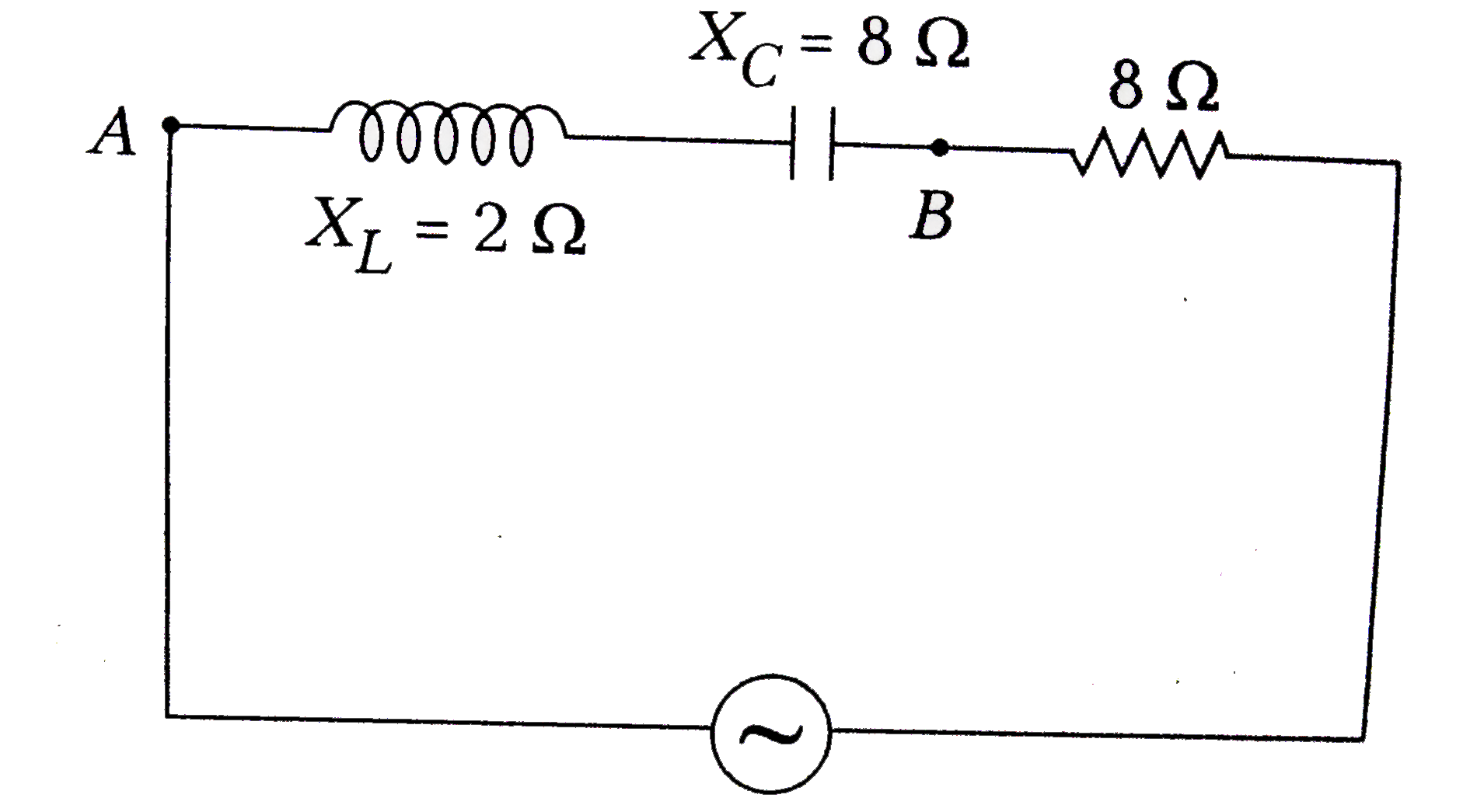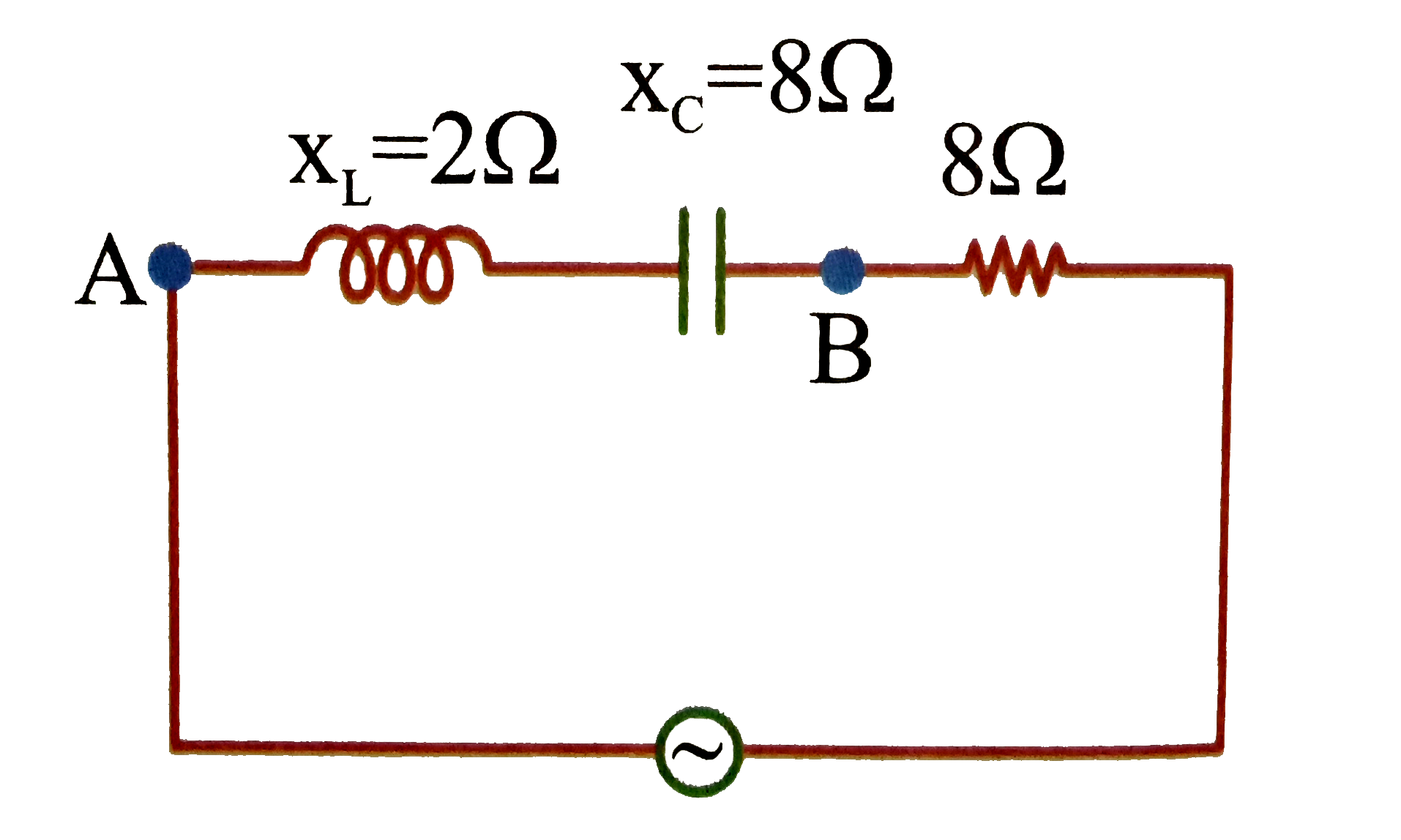An inductor (L=1100πH), a capacitor (C=1500πF) and a resistance (3Ω) is connected in series with an AC voltage source as shown in the figure. The voltage of the AC source is given as V=10cos(100πt) volt. What will be the potential difference between A and B ?

8cos(100πt−127∘)volt
8cos(100πt−53∘)volt
8cos(100πt−37∘)volt
8cos(100πt+37∘)volt
The correct Answer is:C
Step by step video, text & image solution for An inductor (L = (1)/(100 pi) H), a capacitor (C = (1)/(500 pi) F) and a resistance (3 Omega) is connected in series with an AC voltage source as shown in the figure. The voltage of the AC source is given as V = 10 cos(100 pi t) volt. What will be the potential difference between A and B ? by Physics experts to help you in doubts & scoring excellent marks in Class 12 exams.
Topper's Solved these Questions
- BOOK - RESONANCECHAPTER - ALTERNATING CURRENTEXERCISE - EXERCISE-51videos
ALTERNATING CURRENT
- BOOK - RESONANCECHAPTER - ALTERNATING CURRENTEXERCISE - EXERCISE-61videos
ALTERNATING CURRENT
- BOOK - RESONANCECHAPTER - ALTERNATING CURRENTEXERCISE - EXERCISE-31videos
ALTERNATING CURRENT
- BOOK - RESONANCECHAPTER - ATOMIC PHYSICSEXERCISE - Advanved level problems17videos
ATOMIC PHYSICS
Similar Questions
An inductor 200 mH, capacitor 500μF and resistor 10Ω are connected in series with a 100 V variable frequency ac source. What is the frequency at which the power factor of the circuit is unity?
View SolutionA capacitance of (10−32π)F and an inductance of [100π]mH and a resistance of 10Ω are connected in series with an AC voltage source connected in series with an AC voltage source of 220V, 50Hz. The phase angle of the circuit is
View Solution
Knowledge Check
- Question 1 - Select One
An inductor XL = 2Ω ) , a capacitor (XC = 8Ω) and a resistance (R = 8 Ω ) are connected in series with an AC source . The voltage output of AC source is given by V = 10 cos(100πt)
The instantaneous potential difference between points A and B, when the applied voltage is 3/5th of the maximum value of applied voltage is
 A0 VB6 VC8 VDNone of these
A0 VB6 VC8 VDNone of these - Question 2 - Select One
An inductor (XL=2Ω) a capacitor (XC=8Ω) and a resistance (8Ω) are connected in series with an ac source. The voltage output of A.C source is given by v=10cos100πt. The instantaneous p.d. between A and B when is half of the voltage output from source will be:
 A247 voltB245 voltC724 voltsD524 volts
A247 voltB245 voltC724 voltsD524 volts - Question 3 - Select One
An alternating voltage is represented by
V=80sin(100πt)cos(100πt) volt,
What is the peak voltage?A20 VB30 VC40 VD50 V
A multimeter reads a voltage of a certain A.C. source as 100V. What is the peak value of voltage of A.C. source?
View SolutionA 0.21 H inductor and a 12Ω resistance are connected in series to a 220 V, 50 Hz ac source.
the phase angle between the current and the source voltage isView SolutionA 100Ω resistance is connected in series with a 4H inductor. The voltage across the resistor is, VR=(2.0V)sin(103t).
Find amplitude of the voltage across the inductor.View SolutionThe voltage of A.C source varies with tiem according equation. V=120sin100πtcos100πt.Then the frequency of source is
View SolutionThe voltage of an AC source varies with time according to the relation: E=120sin100πtcos100πtV. What is the peak voltage of the source?
View Solution

